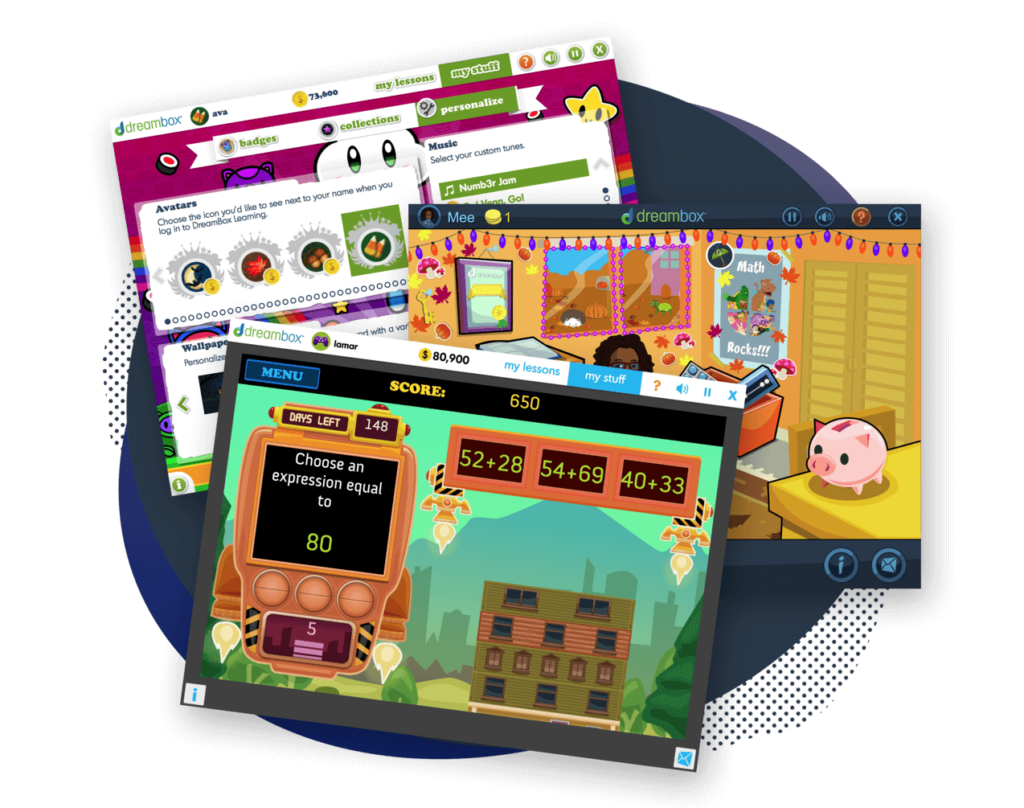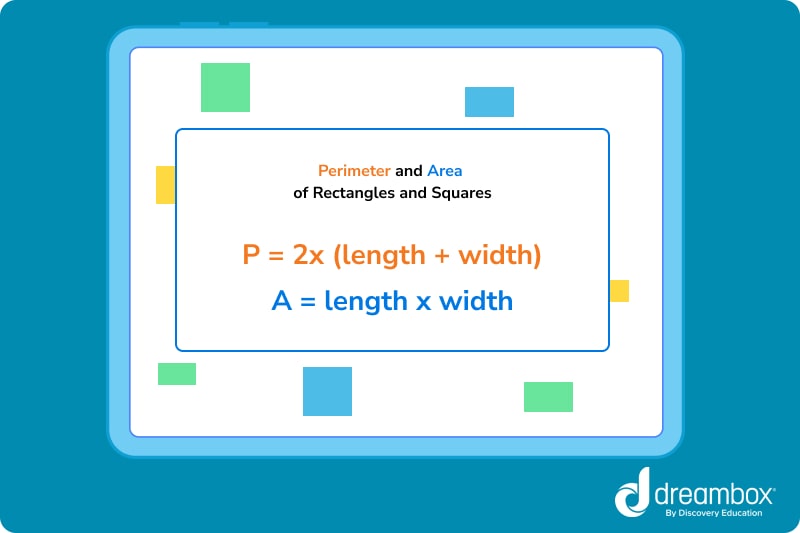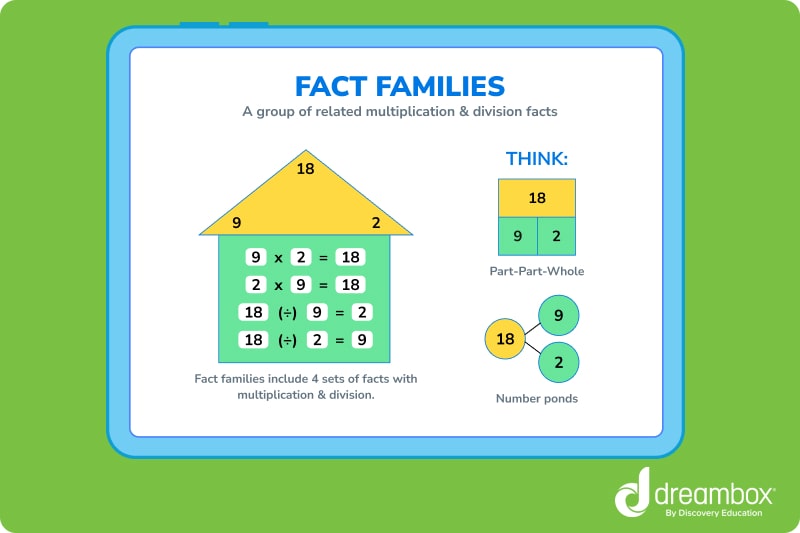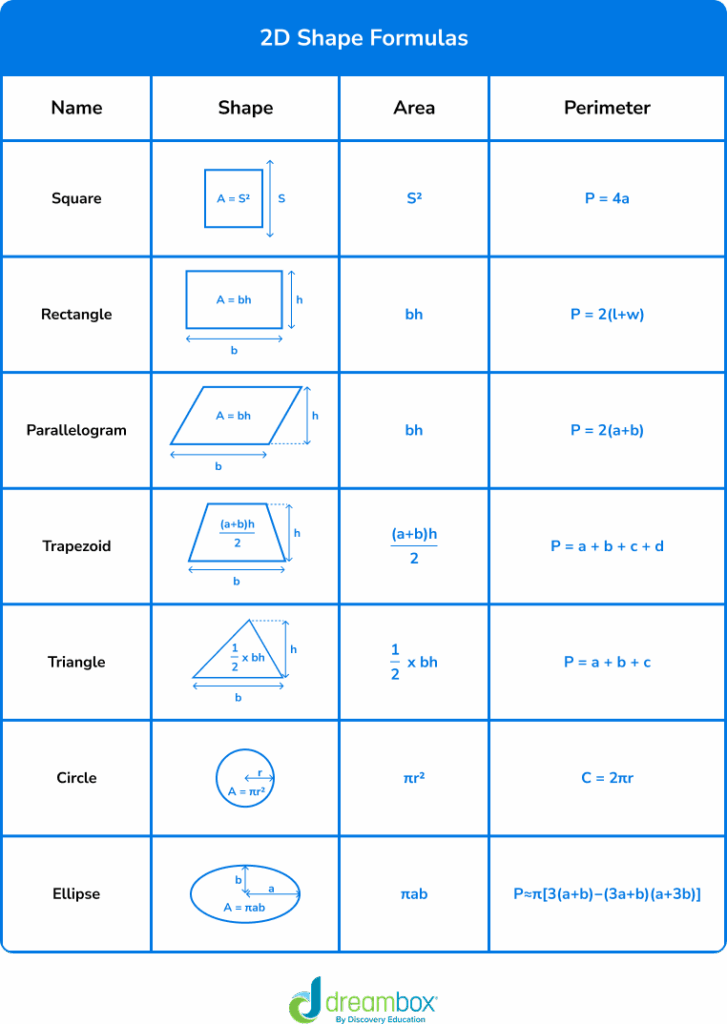Elementary Math Formulas
Here’s a guide and practice problems for all the basic math formulas your elementary student will encounter!

Author
Katie Wickliff
Published:
May 2025
Key takeaways
- • Math formulas are rules or equations that help students solve problems.
- • Students begin learning simple math formulas in elementary school.
- • Parents can help their student master formulas by practicing at home.
When you think of math formulas, what comes to mind? Maybe you picture yourself back in high school, using complicated formulas to solve difficult calculus problems? In reality, learning math formulas actually starts in elementary school! Understanding basic formulas is incredibly important, as it builds a strong foundation that will help them feel more confident in later grades.
In this article, we’ve put together a guide to all the basic math formulas your elementary student will encounter and provided example problems as well. We hope you’ll turn to this resource often as you support your child on their math journey!
What are formulas?
Math formulas are rules or equations that help students solve problems in geometry, algebra, measurement, and more. As a classroom teacher and tutor, I encouraged students to think of formulas like “math recipes.” Just like a cake recipe tells you how much flour and butter to use, math formulas tell you what steps to follow and what order. Once students know the “ingredients” of the formula, they’ll be able to use it over and over again. This analogy helps students make an abstract idea–like formulas–more concrete.
Table of contents
Access more math practice with DreamBox
Turn math into playtime with DreamBox Math
DREAMBOX MATH
Get started for FREE today!

Geometry formulas
Students are usually introduced to the concept of perimeter in 2nd or 3rd grade. While they aren’t working with formulas quite yet, they learn to add up all sides of a figure to get the perimeter. Then, they start working with the perimeter and areas formulas, working with simple shapes and progressing to more complex shapes. Eventually, students are introduced to the volume of 3D shapes, like rectangular prisms.
Perimeter and area of rectangles and squares

Perimeter and area of triangles
P = side₁ + side₂ + side₃
A = ½ × base × height
Volume of Rectangular Prisms
V = length × width × height
While students begin learning about parts of a circle–like radius and diameter–they usually begin working with these formulas in middle school.
Average formula
In 4th grade, students begin calculating averages using this simple formula:
Average= (sum of all numbers) ÷ (number of values)
The term “number of values” refers to the count of numbers in the list.
Simple algebraic formula
When students are first introduced to algebraic thinking, they often use simple formulas without realizing they’re doing algebra!
Fact families
Learning fact families helps students understand the relationship between addition/subtraction and multiplication/division, offering a structured way to learn basic operations.


The math program that drives results
Get started today!
DreamBox adapts to your child’s level and learning needs, ensuring they are appropriately challenged and get confidence-building wins.
Solve for the missing number
Building off fact families, solving for the missing number is an introduction to basic algebra.
5 +___=8
Using variables
Then, variables are introduced using letters in place of numbers.
x+3=12
Area/perimeter with variables
Once students know how to calculate the area and perimeter of shapes, they do simple area/perimeter problems with variables.
A rectangle has a length of 5 and a width of x units. If the area is 20 square units, what is x?
Multiplication patterns
The distributive property allows students to break down a multiplication problem into smaller, more manageable pieces.
4 × (5 + 2)
Instead of adding first, you can use the distributive property:
(4 × 5) + (4 × 2) = 20 + 8 = 28
Math formulas examples
Providing your student with plenty of examples is a great way for them to recognize and remember math formulas. The following are more examples to explore together. Additionally, be sure to head over to Dreambox Math, an award-winning online math program that provides plenty of math formula practice!
1. Area of a Rectangle
Jones is making a poster for the school election. The rectangular poster is 10 inches long and 6 inches wide. What is the area?
Area = length × width = 10 × 6 = 60 square inches
2. Perimeter of a Square
A sandbox is shaped like a square. Each side is 7 feet. What is the perimeter of the sandbox?
Perimeter = 7 × side = 4 × 7= 28 feet
3. Perimeter and Area of a Triangle
A triangle 6 inches and a height of 4 inches. The two sides are 5 inches and 7 inches long.
What is the area and perimeter of the banner?
Area = ½ × base × height
½ × 6 × 4 = 12
Answer: 12 square inches
Perimeter = side₁ + side₂ + base
5 + 7 + 6 = 18
4. Addition with Variables
Kate has x stickers. Her sister gives her 5 more. Now she has 12 stickers. How many stickers did Kate have to start?
x+5=12
x= 12-5
x=7 stickers
5. Subtraction with Variables
Gemma has 14 friendship bracelets. She gives y bracelets away to her classmates. Now Gemma has 5 bracelets left. How many did she give away?
14-y=5
14-5=
y= 9 bracelets
6. Perimeter of a Rectangle with Variables
A rectangular desk has a perimeter of 20 feet. The top and bottom each measure 6 feet. How long are the sides?
20 = 2 × (6 + width)
10 = 6 + width
width = 4 feet long
7. Area of Rectangular Prism with Variables
A gift box is shaped like a rectangular prism.
It has a length of 5 inches, a width of 3 inches, and a height of 2 inches.
What is the surface area of the box?
Surface Area = 2 × (length × width + length × height + width × height)
2 × (5 × 3 + 5 × 2 + 3 × 2)
2 × (15 + 10 + 6)
2 × 31 = 62
The surface area of the box is 62 square inches.
8. Multiplication using the Distributive Property
Solve 4×7 (Break 7 into 5+2)
4 × 7 = 4 × (5 + 2)
(4 × 5) + (4 × 2)
20 + 8 = 28
FAQs
Elementary students learn many basic formulas in math, including: area, perimeter, volume, averages, variables, and more. When kids learn a new math definition, formula practice is key to helping them master the concept.
One formula in 5th grade math is the formula for the volume of a rectangular prism, which is: V=length×width×height
In elementary math, students learn to count, add, subtract, multiply, and divide. They also learn about measurement, time, shapes, patterns, and fractions. Elementary school math focuses on building number sense and applying classroom math to real world situations.
Take at home math practice to the next level
Empowering parents and educators to make math practice more impactful. Plus, your kids will love it.

